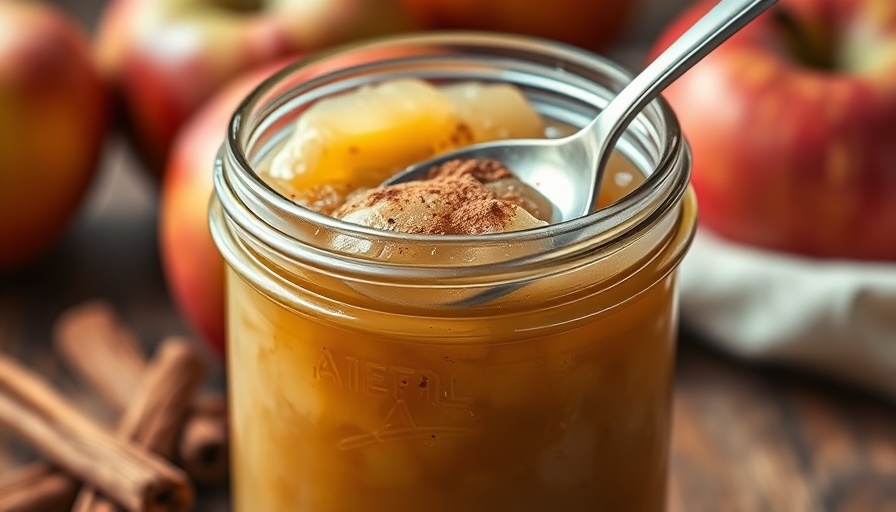
Why Homemade Applesauce is a Game Changer for Immune Support
For individuals focused on maintaining a robust immune system, making homemade applesauce can be a surprisingly beneficial activity. Unlike store-bought alternatives, which are often loaded with preservatives and sugar, homemade applesauce allows you to control the ingredients and maximize health benefits. Apples are rich in antioxidants, vitamins, and dietary fiber, which can contribute positively to immune health.
Transforming Your Health One Spoonful at a Time
The process of making Instant Pot applesauce is not only simple, taking just 8 minutes of cooking time, but it’s also a rewarding opportunity to harness the nutritional power of seasonal fruit. By utilizing a mix of tart and sweet apples, such as Granny Smith and Honeycrisp, you amplify the flavor and complexity of the sauce while ensuring you receive a range of nutrients. This DIY approach to applesauce becomes a delicious, versatile component of your diet that can boost mood and mental clarity—crucial factors for those recovering from illness or managing daily stress.
The Nutritional Payoff of Each Ingredient
Let's break down the key components of this splendid recipe. By including lemon juice, you not only enhance the flavor but also introduce a source of vitamin C, known for its immune-boosting properties. Spices like cinnamon not only add warmth and comfort but also boast anti-inflammatory properties that can aid recovery and overall well-being. Furthermore, if you choose to incorporate a natural sweetener like honey or maple syrup, you can also take advantage of their additional health benefits, which can help support your energy levels throughout the day.
Meal Prep: Your New Best Friend
A significant advantage of preparing applesauce at home is that you can create big batches and store them in freezer-safe containers. This makes it incredibly easy to incorporate a healthy snack during busy days or post-workout recovery periods. Imagine reaching for a nutrient-packed serving of homemade applesauce instead of a sugary commercial variant—this simple swap can contribute to healthier weight management and overall nourishment.
Endless Applications: The Versatility of Applesauce
This isn’t just a sweet treat; homemade applesauce can effortlessly enhance various recipes. Consider using it as a substitute for oil or sugar in baked goods or as a sweet touch in savory soups. The multitude of uses makes applesauce an invaluable staple in a health-conscious kitchen, exemplifying the intersection of convenience and nutrition.
A Call for Inclusive Nutrition Education
As a community, it's vital that we emphasize the importance of accessible nutrition education. With rising health concerns tied to poor dietary choices, integrating simple practices—like making homemade applesauce—can promote healthier lifestyles. I encourage you to explore this recipe and inspire others to reclaim their culinary agency, ensuring that we all advance toward a more health-aware future.
Incorporate this Instant Pot applesauce into your routine and witness firsthand how this small change can lead to significant health benefits for your immune system and overall wellness. Invest in your health today—because every spoonful counts!
 Add Row
Add Row  Add
Add 







Write A Comment